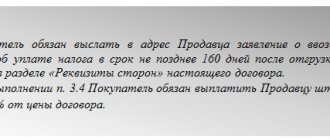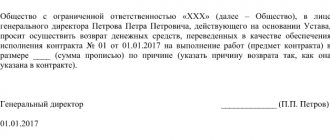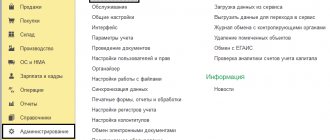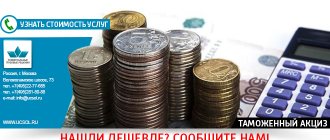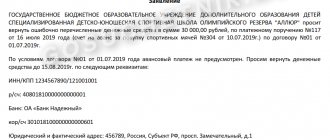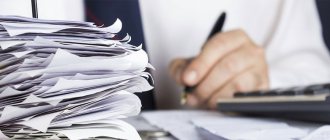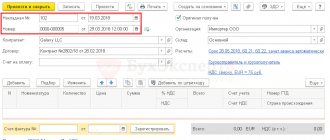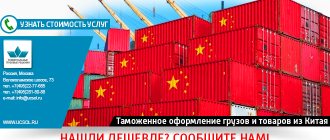Object of taxation upon import
The import of goods in Russian legislation is the import of goods into its territory without mandatory export.
Import is considered an absolutely independent object of VAT taxation, which means that importing taxpayers are obliged to act in accordance with the norms of the Tax Code of the Russian Federation, which clearly defines the procedure for taxation of import procedures. The applicant's obligations to pay VAT upon import arise as soon as the customs officers register the declaration. In this case, it is necessary to fully pay VAT at customs before the goods are released from it. The tax is calculated at established rates from the total amount, which is the customs value of imported goods, excise tax, and customs duty.
For information about what costs are included in the customs value, read the article “Inclusion of transport costs in the customs value.”
To determine the correct tax base, the currency value of goods must be converted into rubles at the exchange rate of the Central Bank of the Russian Federation on the date of registration of the declaration.
ConsultantPlus experts explained step by step how to take into account VAT when importing from countries outside the EAEU. Get trial access to the K+ system and upgrade to the Ready Solution for free.
In what cases is VAT not refundable?
Only organizations and individual entrepreneurs that follow the general taxation system can refund VAT on imports.
Entrepreneurs using “simplified” or “imputation” are also required to pay VAT, despite the fact that they do not have the opportunity to issue a tax deduction. The costs they incur are included in the price of the products or services sold.
When can I get a VAT refund on imports?
In accordance with Art. 172 of the Tax Code of the Russian Federation, VAT that was paid during customs procedures can be deducted, thereby reducing further tax payments. However, this requires simultaneous compliance with certain conditions:
- Imported goods are purchased for mandatory participation in transactions subject to VAT.
- The arrival of goods is reflected in accounting.
- The importer who wishes to apply deductions has documentary evidence of the actual payment of customs VAT.
NOTE! Strict compliance by the importing company with the above conditions directly determines whether it will be able to apply a tax deduction and reimburse VAT on import transactions.
And one more moment. If import VAT was unlawfully and excessively withheld by customs and then returned by it, the deduction must be restored.
At what point, find out here .
Customs VAT rates
The customs duty rate and the VAT rate should not be confused. Customs duties are regulated by Art. 164 Tax Code of the Russian Federation. Customs VAT rates have been changed in 2021 and are now possible in three values: 20% - with full taxation, 10% - with preferential taxation and 0% - with VAT exemption.
At a rate of 0% , for example, materials for scientific research that are not produced in Russia, medicines and vital medical products, glasses and frames, cultural property for museums, etc. are taxed. To apply the rate, you need to understand what type of exemption this product falls under (Article 150, paragraph 1 of Article 164 of the Tax Code of the Russian Federation, Government Decree No. 1042 On the list of medical goods). You will also have to show documents to customs that confirm the purpose of the product and its compliance with its category.
at a rate of 10% : meat, milk, poultry, sugar, salt, butter, cereals, flour, pasta. This category also includes products for children: knitwear, underwear, mittens, hats, shoes, cribs, strollers, toys, school supplies. This also includes periodicals, books, art albums and other periodicals, except advertising and erotica. All these categories are described in paragraph 2 of Art. 164 Tax Code of the Russian Federation.
at a rate of 20% (clause 3 of Article 164 of the Tax Code of the Russian Federation).
Availability of documents
Now let's look at these conditions in more detail. According to customs legislation, the import operation begins when the declaration and all documentation necessary for processing the imported goods are handed over to customs officers. It ends with the release of goods by a customs officer, who puts the appropriate marks on the declaration and other related documents - transport, commercial, etc.
This means that the imported goods will be considered released from customs only when the importer has in his hands a customs declaration and other necessary accompanying papers with a stamp from customs officials authorizing the release.
Further use of the product
The condition on the possibility of refunding import VAT solely for the subsequent use of goods in transactions subject to this tax does not require any special confirmation from the importer for him to make tax deductions.
However, keep in mind: if this condition was not met (and controllers will certainly identify this in the future), the use of such deductions will be regarded as unlawful, with all the ensuing consequences. The same applies to non-compliance with the condition regarding the use of imported goods only within the country.
Registration
As for the acceptance of goods for registration, the Tax Code of the Russian Federation still does not contain unambiguous interpretations explaining what documents the importer can use to confirm this fact to the inspectors. However, the general legal practice in this case is such that there will be no confirmation of acceptance of the goods for registration if the taxpayer does not have a primary document drawn up in accordance with the norms of the current legislation.
About the documents that serve as the basis for the capitalization of incoming inventory items, read the article “Maintaining document flow for warehouse accounting of materials.”
What to do if tax authorities violate refund deadlines
If you did everything as it should, but still don’t have the money, contact the inspector who conducted the inspection. It is possible that there was a technical error and the money will arrive soon.
If you were unable to resolve the issue with the inspector, send a letter to the head of the Federal Tax Service. Well, if this doesn’t help, write to a higher tax authority. If you are unable to reach an agreement with the tax authorities at all levels, your only option is to go to court.
If the VAT refund deadline was violated unreasonably, you have the right to receive not only the principal amount, but also interest during the delay, based on the Central Bank refinancing rate (clause 10 of Article 176 of the Tax Code of the Russian Federation).
Paying tax
Payment of taxes and duties at customs today can be made in various ways: using ATMs, electronic or payment terminals, etc. Depending on the chosen method of paying customs VAT, as confirmation of this fact, the importer can provide the controllers with the relevant documents - receipts or payment orders .
If the taxpayer complies with all the conditions considered, customs VAT can be deducted.
To learn about which persons become payers of customs VAT, read the material “Who is a VAT payer?”
Documents to confirm VAT refund upon import
In order to confirm his right to deduction, the importer is obliged, along with the tax return in which he declared deductions and refunds of import VAT, to submit to the tax authorities:
- customs declaration stamped by customs officers;
- a tax payment document, which is evidence that VAT actually went to the budget.
Next, tax inspectors will conduct a mandatory check of the validity of the import VAT refund in accordance with Art. 88 of the Tax Code of the Russian Federation, during which they will need to present all the papers available for import transactions. If there are no claims to the documents from the tax authorities, the importer will be issued a decision on compensation at the end of the inspection.
See also our material “How is VAT refunded: return (refund) scheme?” .
Who and how can return VAT in an accelerated manner?
Some businessmen can return VAT from the budget much faster than described above (Article 176.1 of the Tax Code of the Russian Federation). The following taxpayers are eligible for an accelerated refund.
- Large taxpayer organizations. We are talking about legal entities that over the previous three years have paid income tax, excise taxes, VAT and mineral extraction tax for a total amount of at least 2 billion rubles.
- Residents of the territory of rapid socio-economic development or the free port of Vladivostok. The management company of the territory or port must vouch for the businessman.
- Any taxpayers who have provided a surety or bank guarantee, if the legal requirements for a surety or guarantor are met. The guarantor, in particular, must transfer to the budget at least 2 billion in taxes over the last three years, and the guarantor bank must have an authorized capital of at least 1 billion rubles.
You can return VAT from the budget in an accelerated manner within 15 days, that is, you do not need to wait for the results of a desk audit. The process looks like this.
- Within five days after filing the return, the taxpayer submits an application for an accelerated refund.
- Tax officials make a decision within five days.
- Within five days, the treasury transfers the money.
But the declaration will still be checked. If it turns out that the tax was reimbursed unreasonably, it will have to be returned to the budget. During the use of budget funds, you will need to pay penalties at double the refinancing rate of the Central Bank of the Russian Federation (clause 17 of Article 176.1 of the Tax Code of the Russian Federation).
How is the VAT refund check carried out when importing goods?
In order to verify the legality of import VAT refunds, controllers carry out the following activities:
- Analysis of documents submitted by the importer, during which the declarant, shippers, consignees, actual temporary storage warehouses are identified and the fact of vehicles crossing customs posts is determined.
- Determination of a foreign manufacturer (carried out by sending a request to the relevant control authorities of foreign states). The presence or absence of information about a foreign counterparty on the Internet can also be analyzed.
- Establishing the actual buyer of the goods based on the results of a study of the movement of goods: transport and accompanying papers are checked, the carrier, the type of transport used and its owner are determined. Also, the volume of the imported consignment is checked for compliance with the carrying capacity of the transport, the goods distribution route is established, and control measures are carried out in relation to all persons involved in the chain (carriers, forwarders, consignees and even drivers).
- Identification of the final buyer according to the above scheme.
Carrying out a detailed audit, tax authorities are trying to establish facts of illegal VAT refunds, including through the use of gray tax schemes.
Read about the procedure for such an audit in the article “Features of a desk audit for VAT refundable.”
When can you argue with the tax office?
Speaking about the refund of import VAT, one cannot fail to mention that there are a number of controversial situations in which the opinions of controllers and taxpayers differ. For example, the import of demonstration samples: as practice shows, inspectors often remove deductions for them, citing the fact that the VAT paid on the import of free samples cannot be reimbursed.
Is it possible to somehow substantiate your right to a deduction in this situation? Undoubtedly. It is only necessary to clarify that the samples received free of charge are planned to be used in the sale of similar goods. And since the sale of analogue goods is subject to VAT, it means that the samples were also purchased for taxable transactions. Therefore, the deduction is legal.
Results
VAT paid at customs when importing goods can be deducted for this tax, but this requires compliance with a number of conditions in relation to the imported goods:
- it is intended for transactions subject to VAT;
- it is reflected in accounting;
- the tax relating to it is paid to customs.
Each of these points must be confirmed by documents that the Federal Tax Service has the right to request to verify the legality of applying the customs VAT deduction.
Sources: Tax Code of the Russian Federation
You can find more complete information on the topic in ConsultantPlus. Free trial access to the system for 2 days.
Customs value of goods
When importing goods into Russia, the customs value is determined in the manner and methods established in Chapter 5 of the EAEU Labor Code.
By default, customs value is determined using the method based on the transaction value of imported goods. If it is impossible to determine the value of the imported goods using this method, others are used.
This follows from paragraph 1 of Article 39, paragraph 1 of Article 41, paragraph 1 of Article 42, paragraph 1 of Article 43, paragraph 1 of Article 44 and paragraph 1 of Article 45 of the EAEU Labor Code.
The customs value includes not only the price of the imported goods, but also additional costs that are not included in the price. These expenses will increase the tax base for VAT, that is, they will also have to pay tax. Of course, provided that the import of the goods themselves is not subject to VAT exemption (clause 7 of Article 150, Articles 160 and 166 of the Tax Code). Moreover, customs officers will take into account both additional costs already incurred and upcoming ones.
The list of such expenses is given in paragraph 1 of Article 40 of the EAEU Labor Code and does not depend on the method of determining the customs value (Articles 39–45 of the EAEU Labor Code).
The table will help you understand what additional costs are included in the customs value of goods:
| What else is taken into account in the customs value, in addition to the price of imported goods? | Base | |
| Expenses that are not included in the price of imported goods | for remuneration to intermediaries, agents and brokers. In addition to remuneration to agents and intermediaries for representing the interests of the organization abroad related to the purchase of imported goods | Subparagraph “a” of paragraph 1 of part 1 of Article 40 of the EAEU Labor Code |
| for packaging, if for customs purposes it is considered integral with the imported goods | Subparagraph “b” of paragraph 1 of part 1 of Article 40 of the EAEU Labor Code | |
| for packaging, that is, the cost of packaging materials and work | Subparagraph “c” of paragraph 1 of part 1 of Article 40 of the EAEU Labor Code | |
| The cost of goods and services not included in the price of imported goods. If directly or indirectly the buyer provided them to the seller at a reduced price or free of charge for the purpose of using them in the production or sale of the imported goods | raw materials, materials, parts, semi-finished products and similar items that make up the imported goods | Subparagraph “a” of paragraph 2 of part 1 of Article 40 of the EAEU Labor Code |
| tools, dies, molds and other similar items used in the production of imported goods | Subparagraph “b” of paragraph 2 of part 1 of Article 40 of the EAEU Labor Code | |
| materials used in the production of imported goods | Subparagraph “c” of paragraph 2 of part 1 of Article 40 of the EAEU Labor Code | |
| design, development, engineering, design work, decoration, design, sketches and drawings made outside the customs territory of the Union and necessary for the production of imported goods | Subclause “d” of clause 2 of part 1 of article 40 of the EAEU Labor Code | |
| Part of the income (revenue) received from the subsequent sale, disposal in another way or use of imported goods, which is directly or indirectly due to the seller | Clause 3 of Part 1 of Article 40 of the EAEU Labor Code | |
| Costs for transportation (transportation) of goods to the airport, seaport or other place of arrival of goods into the customs territory of the Union. If the Commission, depending on the type of transport, determines other places, then the costs of transporting goods to these places. This also includes the costs of transportation insurance. | Clauses 4 and 6 of part 1 of article 40 of the EAEU Labor Code | |
| Expenses for loading, unloading or reloading of goods (for other operations) associated with their transportation (transportation) to the airport, seaport or other place of arrival of goods into the customs territory of the Union. If the Commission, depending on the type of transport and the characteristics of the transportation of goods, determines other places, then the costs of loading, unloading or reloading of goods during their transportation to these places. This also includes the costs of insuring these operations. | Clauses 5 and 6 of Part 1 of Article 40 of the EAEU Labor Code | |
| License and other similar payments for the use of intellectual property (including royalties, fees for patents, trademarks, copyrights) in an amount not included in the price. Provided that such expenses relate to imported goods and, according to the terms of sale, the buyer is obliged to make them. An exception is made (i.e., not included in the customs value) payments for the right: · reproduction (replication) of imported goods in the customs territory of the Union; · distribution or resale of imported goods, unless such payments are a condition for the sale of imported goods for export to the customs territory of the Union | Clause 7 of Part 1 of Article 40 of the EAEU Labor Code | |
Other expenses cannot be added to the price of the imported goods and included in its customs value. This is directly stated in Part 4 of Article 40 of the EAEU Labor Code.
In addition, there is a clear indication of which expenses included in the price of imported goods cannot be included in its customs value. The main condition is that these expenses must be separated from the price of the goods, declared by the declarant and documented. Their list is given in the table:
| What cannot be included in the customs value | Base |
| Expenses for construction, construction, assembly, installation, maintenance or technical assistance incurred after the arrival of goods in the customs territory of the Union in relation to such valued (imported) goods as industrial installations, machinery or equipment | Clause 1 of part 2 of article 40 of the EAEU Labor Code |
| Expenses for transportation (transportation) of goods through the customs territory of the Union, carried out after their arrival in the customs territory of the Union. If the Commission, depending on the type of transport used for transportation, has determined a different place, then the costs of transporting goods through the customs territory of the Union carried out after their arrival at this place | Clause 2 of part 2 of article 40 of the EAEU Labor Code |
| Duties, taxes and fees paid in the customs territory of the Customs Union in connection with the import or sale of valued (imported) goods | Clause 3 of part 2 of article 40 of the EAEU Labor Code |
